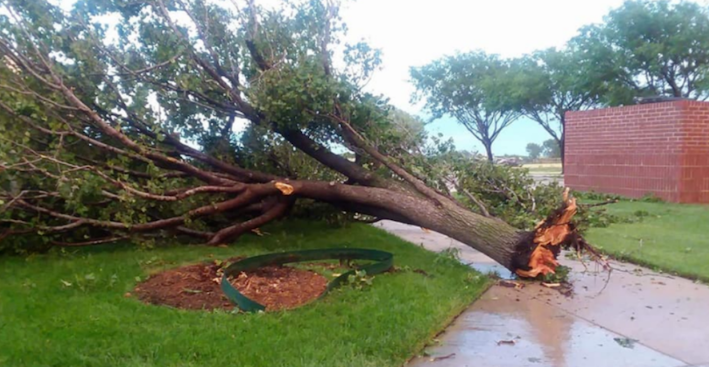Homeowners often think of tree damage as a minor issue, but when a storm hits, a fallen or damaged tree can cause significant harm to both your property and your home. The cost of removing the tree, along with any associated damage, can add up quickly. If a tree falls on your property, it can damage your roof, windows, driveway, and even your landscaping. In such situations, many homeowners may wonder: does home insurance cover tree removal after a storm? The answer depends on several factors, including the nature of the damage, your specific home insurance policy, and the cause of the tree’s fall.
In this article, we’ll explore how home insurance works when it comes to tree removal, what it covers, and the steps homeowners can take to navigate the claims process after a storm.
What Home Insurance Covers When It Comes to Tree Removal
Home insurance policies vary from one insurer to another, but generally, the standard home insurance policy includes some level of coverage for damage caused by a fallen tree. However, it’s essential to understand the specifics of your policy, as not all home insurance policies cover tree removal in every scenario.
1. Damage to Property Caused by a Fallen Tree
Most standard home insurance policies provide coverage for property damage caused by a tree that falls onto your home or other structures on your property. This may include damage to:
- The roof of your house
- Your windows, doors, and other exterior parts of the home
- Your driveway, patio, or fencing
- Other structures such as sheds, garages, or outdoor structures
If a tree falls on your home or another covered structure due to a storm, most home insurance policies will cover the cost of repairs to the damaged structure. This typically falls under the “dwelling coverage” portion of your home insurance policy.
2. Removal of Fallen Trees from Covered Structures
Home insurance policies also tend to cover the removal of trees if the tree is blocking access to your property or if it has caused damage to your home. For example, if a tree falls on your roof, your insurance will likely pay for the costs of removing the tree as part of the property damage claim.
However, there are usually limits to this coverage. Most policies have a cap on how much they will pay for tree removal after a storm, often ranging from $500 to $1,000 per tree. The removal costs beyond this limit may be your responsibility.
3. Additional Living Expenses (ALE)
If the tree damage is significant enough to make your home uninhabitable, your home insurance policy may cover additional living expenses (ALE) until repairs are completed. This can include temporary housing, food, and other living costs while you wait for the damage to be repaired.
What Home Insurance Does Not Cover When It Comes to Tree Removal
While home insurance policies offer some coverage for tree removal, there are several situations where tree removal may not be covered. It’s crucial to understand these exclusions to avoid confusion or unexpected expenses.
1. Tree Removal from the Yard (Without Damage)
If a tree falls on your property but does not damage any structures, your home insurance policy may not cover the cost of tree removal. For example, if a tree falls in your yard and only damages the landscaping or causes no significant property damage, insurance likely will not pay for the removal. In these cases, the homeowner would be responsible for the cost of removing the tree.
2. Tree Damage Due to Negligence
If the tree was in poor health or had visible signs of decay before the storm, and the damage occurred because of this neglect, your insurance policy may not cover tree removal costs. Homeowners are generally expected to maintain their property, including trees. If a tree is weak, diseased, or dead, and it falls as a result of neglect, insurance companies may deny the claim for tree removal or related damage.
3. Tree Removal from the Property Line or Neighbor’s Yard
If a tree falls on your property but is owned by a neighbor, or if the tree falls across the property line, it’s not automatically covered by your homeowner’s insurance. In such cases, your neighbor’s homeowner’s insurance may be responsible for the damage or removal, depending on the cause of the tree’s fall and the terms of their insurance policy. However, this is a tricky situation, as some homeowners may need to work with their neighbors and legal advice to determine responsibility.
4. Tree Removal Due to Flooding or Earthquakes
Most standard home insurance policies do not cover damages caused by flooding or earthquakes. If a tree falls due to flooding or earthquake damage, you would need to have separate flood or earthquake insurance coverage to address the damage. Flood insurance policies, for instance, may not cover the removal of trees unless there’s significant property damage caused by the flooding.
Steps to Take After a Storm to Address Tree Removal and Damage
If a tree has fallen on your property after a storm, there are several steps you can take to minimize damage and determine whether your insurance will cover the cost of removal and repairs.
1. Ensure Safety First
If a tree has fallen near power lines or has caused structural damage to your home, it’s essential to stay safe. Fallen trees can pose significant risks, including electrical hazards, sharp branches, or the possibility of additional damage if not handled properly. Call the appropriate authorities or emergency services to ensure the area is safe and that the necessary precautions are in place.
2. Document the Damage
Before you remove the tree or make any repairs, it’s crucial to document the damage. Take detailed photos and videos of the fallen tree, the damage it caused, and any other relevant details. This documentation will be useful when filing an insurance claim. Be sure to take photos from various angles and capture the extent of the damage to your home, property, and surrounding areas.
3. Contact Your Insurance Company
Once you’ve ensured safety and documented the damage, contact your insurance company as soon as possible to report the incident. Provide them with the necessary details about the storm, the damage caused, and the need for tree removal. Your insurer may send an adjuster to assess the damage and determine if your policy covers the removal costs.
4. Get an Estimate for Tree Removal
Even if your home insurance covers tree removal, it’s still a good idea to get an estimate from a professional tree removal service. This will help you understand the potential costs and ensure you receive fair pricing for the service. Make sure the tree removal company provides a detailed written estimate, and check with your insurance company to verify that the costs fall within your policy’s coverage limits.
5. File Your Claim
Once you have the necessary documentation and estimates, file your claim with your insurer. The insurance company will assess your claim and determine whether tree removal and repair costs are covered. If approved, the insurer will provide you with compensation for the damage (minus your deductible). You may be asked to hire a licensed contractor for the repair work.
6. Consider Professional Help for Disputes
If you encounter issues with your insurer, such as a denial of coverage or an inadequate settlement, consider seeking help from a public adjuster or legal advisor. They can help you navigate the claims process and advocate on your behalf to ensure you receive the coverage you’re entitled to.
Final Thoughts
Tree removal after a storm can be expensive, and while home insurance may cover the costs in some circumstances, there are several factors to consider before assuming coverage. Understanding your home insurance policy, what is covered, and what’s excluded is key to managing the aftermath of a storm. By documenting the damage, ensuring your safety, and working with your insurer, you can determine whether your policy covers tree removal and how to proceed with repairs.
Be proactive about maintaining your property and trees, as well. Regular tree inspections and maintenance can help reduce the risk of damage during storms and keep your home safe. If you’re unsure about your coverage, it’s always wise to reach out to your insurance agent to clarify the details of your policy before disaster strikes.







